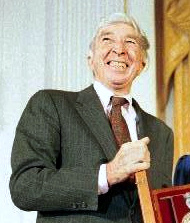|
Seek My Face
''Seek My Face'' is a 2002 book by John Updike. Synopsis The novel follows the life of Hope Chafetz, an elderly artist who is being interviewed by a journalist. During the interview Hope discusses her many marriages, one of which is to a famous painter. Reception In a review for ''New York Times'' Michiko Kakutani is an American writer and retired literary critic, best known for reviewing books for ''The New York Times'' from 1983 to 2017. In that role, she won the Pulitzer Prize for Criticism in 1998. Early life and family Kakutani, a Japanese Americ ... criticized the book's characters, which she felt were unbelievable. References {{John Updike Novels by John Updike 2003 American novels Novels about artists ... [...More Info...] [...Related Items...] OR: [Wikipedia] [Google] [Baidu] |
John Updike
John Hoyer Updike (March 18, 1932 – January 27, 2009) was an American novelist, poet, short-story writer, art critic, and literary critic. One of only four writers to win the Pulitzer Prize for Fiction more than once (the others being Booth Tarkington, William Faulkner, and Colson Whitehead), Updike published more than twenty novels, more than a dozen short-story collections, as well as poetry, art and literary criticism and children's books during his career. Hundreds of his stories, reviews, and poems appeared in ''The New Yorker'' starting in 1954. He also wrote regularly for ''The New York Review of Books''. His most famous work is his "Rabbit" series (the novels ''Rabbit, Run''; ''Rabbit Redux''; ''Rabbit Is Rich''; ''Rabbit at Rest''; and the novella ''Rabbit Remembered''), which chronicles the life of the middle-class everyman Rabbit Angstrom, Harry "Rabbit" Angstrom over the course of several decades, from young adulthood to death. Both ''Rabbit Is Rich'' (1981) and ''Ra ... [...More Info...] [...Related Items...] OR: [Wikipedia] [Google] [Baidu] |
Knopf
Alfred A. Knopf, Inc. () is an American publishing house that was founded by Blanche Knopf and Alfred A. Knopf Sr. in 1915. Blanche and Alfred traveled abroad regularly and were known for publishing European, Asian, and Latin American writers in addition to leading American literary trends. It was acquired by Random House in 1960, and is now part of the Knopf Doubleday Publishing Group division of Penguin Random House which is owned by the German conglomerate Bertelsmann. The Knopf publishing house is associated with the borzoi logo in its colophon (publishing), colophon, which was designed by co-founder Blanche Knopf in 1925. History Founding Knopf was founded in 1915 by Alfred A. Knopf Sr. along with Blanche Knopf, on a $5,000 advance from his father, Samuel Knopf. The first office was located in New York's Candler Building (New York City), Candler Building. The publishing house was officially incorporated in 1918, with Alfred Knopf as president, Blanche Knopf as vice pres ... [...More Info...] [...Related Items...] OR: [Wikipedia] [Google] [Baidu] |
Michiko Kakutani
is an American writer and retired literary critic, best known for reviewing books for ''The New York Times'' from 1983 to 2017. In that role, she won the Pulitzer Prize for Criticism in 1998. Early life and family Kakutani, a Japanese American, was born on January 9, 1955, in New Haven, Connecticut. She is the only child of Yale mathematician Shizuo Kakutani and Keiko "Kay" Uchida. Her father was born in Japan, and her mother was a second-generation Japanese-American who was raised in Berkeley, California. Kakutani's aunt, Yoshiko Uchida, was an author of children's books. Kakutani received her bachelor's degree in English literature from Yale University in 1976.. Career Kakutani initially worked as a reporter for ''The Washington Post'', and then from 1977 to 1979 for ''Time'' magazine. In 1979, she joined ''The New York Times'' as a reporter. Literary critic Kakutani was a literary critic for ''The New York Times'' from 1983 until her retirement in 2017. She gained part ... [...More Info...] [...Related Items...] OR: [Wikipedia] [Google] [Baidu] |
Novels By John Updike
A novel is an extended work of narrative fiction usually written in prose and Publication, published as a book. The word derives from the for 'new', 'news', or 'short story (of something new)', itself from the , a singular noun use of the neuter plural of ''novellus'', diminutive of ''novus'', meaning 'new'. According to Margaret Doody, the novel has "a continuous and comprehensive history of about two thousand years", with its origins in the Ancient Greek novel, Ancient Greek and Roman novel, Medieval Chivalric romance, and the tradition of the Italian Renaissance novella.Margaret Anne Doody''The True Story of the Novel'' New Brunswick, NJ: Rutgers University Press, 1996, rept. 1997, p. 1. Retrieved 25 April 2014. The ancient romance form was revived by Romanticism, in the historical romances of Walter Scott and the Gothic novel. Some novelists, including Nathaniel Hawthorne, Herman Melville, Ann Radcliffe, and John Cowper Powys, preferred the term Romance (literary fiction) ... [...More Info...] [...Related Items...] OR: [Wikipedia] [Google] [Baidu] |
2003 American Novels
3 (three) is a number, numeral (linguistics), numeral and numerical digit, digit. It is the natural number following 2 and preceding 4, and is the smallest odd prime number and the only prime preceding a square number. It has religious and cultural significance in many societies. Evolution of the Arabic digit The use of three lines to denote the number 3 occurred in many writing systems, including some (like Roman and Chinese numerals) that are still in use. That was also the original representation of 3 in the Brahmic numerals, Brahmic (Indian) numerical notation, its earliest forms aligned vertically. However, during the Gupta Empire the sign was modified by the addition of a curve on each line. The Nāgarī script rotated the lines clockwise, so they appeared horizontally, and ended each line with a short downward stroke on the right. In cursive script, the three strokes were eventually connected to form a glyph resembling a with an additional stroke at the bottom: ३. ... [...More Info...] [...Related Items...] OR: [Wikipedia] [Google] [Baidu] |



